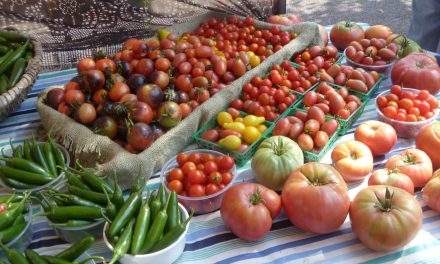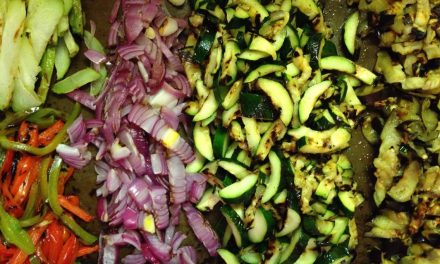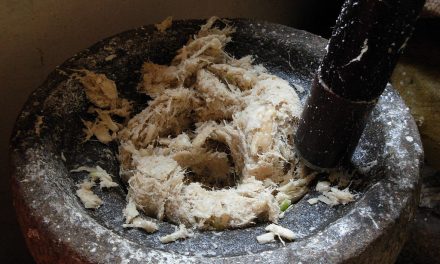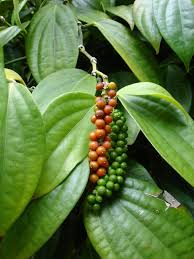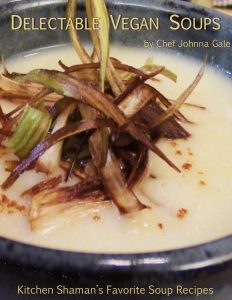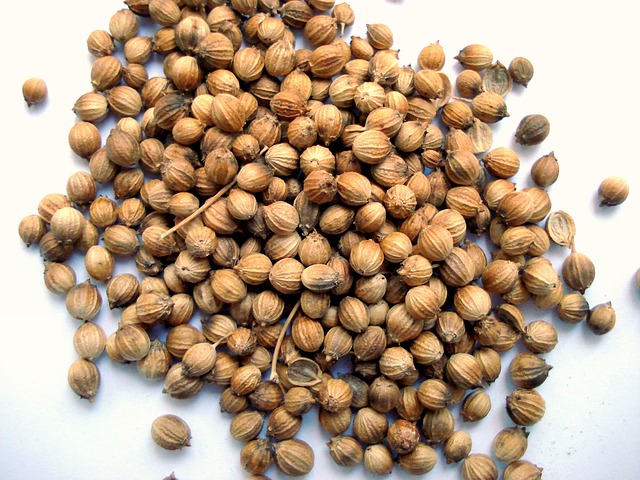 Certain foods inspire strong reactions in people. For example, many people either love or hate cilantro. Its prevalence in salsas and Mexican sauces make it easily recognizable to most diners. On the other hand, coriander is more of a stealth ingredient, finding its way into many foods without inspiring such a strong reaction. What many people don’t realize is that those cilantro leaves and stems come from the same plant as the spice known as coriander.
Certain foods inspire strong reactions in people. For example, many people either love or hate cilantro. Its prevalence in salsas and Mexican sauces make it easily recognizable to most diners. On the other hand, coriander is more of a stealth ingredient, finding its way into many foods without inspiring such a strong reaction. What many people don’t realize is that those cilantro leaves and stems come from the same plant as the spice known as coriander.
Coriander is the fruit or seed of the cilantro plant (also known as Chinese parsley). The seed is ground up and used as a base in curry pastes or “gravies.” It serves as a base ingredient in Mediterranean, Chinese, and Indonesian cooking. It sports a pungent fragrance and provides a deep, rich flavor to food. Cilantro, on the other hand, lighter but stronger, imparts a “lift” to any food it seasons. Recipes usually add cilantro at the end of a dish while coriander is added at the beginning. Oftentimes coriander is toasted and ground, and then mixed in with ginger and turmeric. Diners can easily see and recognize cilantro in a dish, which can trigger an immediate reaction, either positive or negative. Since coriander is one of the invisible spices, most people don’t even know they are eating it.
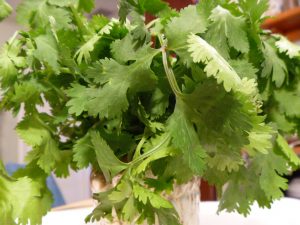 There are many culinary uses for coriander. I put it into almost any stew or soup I make. I use it in chili and in the Indian dishes I am learning to cook. It was an ingredient in the “magic sauce” that I accidentally created one night. I like the earthiness, the pungency, the deepness coriander gives to dishes.
There are many culinary uses for coriander. I put it into almost any stew or soup I make. I use it in chili and in the Indian dishes I am learning to cook. It was an ingredient in the “magic sauce” that I accidentally created one night. I like the earthiness, the pungency, the deepness coriander gives to dishes.
I started using coriander after reading Michael Symon’s Live to Cook: Recipes and Techniques to Rock Your Kitchen a book by one of America’s Iron Chef’s. Using coriander made sense to me, since I was already a heavy user of cilantro. From the time I started using it in my food, I have been richly rewarded with compliments.
Like other spices that are used in curries, coriander has many medicinal uses. It is a digestive aid, an anti-inflammatory and helps with nausea. It can help prevent urinary tract infections. It is believed to help prevent heart disease, lower LDL’s (bad cholestorol) and it is known to lower blood sugar. Coriander is also a good source of trace minerals like potassium, calcium, manganese, iron, and magnesium. It has been proven to be an effective and powerful anti-oxidant.
Coriander may be one of the oldest used herbs or spices in our food. It grows wild, and needs hardly any cultivation to thrive. It is easy to start, and doesn’t mind being transplanted. I’ve successfully grown and harvested several plants for seed. Once the desert weather cools down, I’ll have another crop on the way.
If you aren’t a fan of cilantro, try coriander; you might be surprised, and may find yourself starting to like cilantro a little more.

